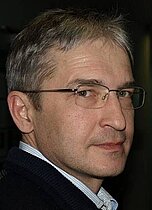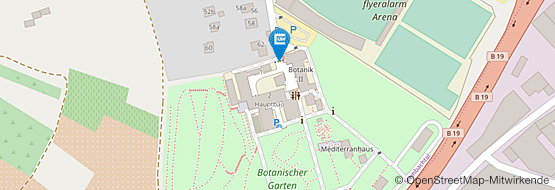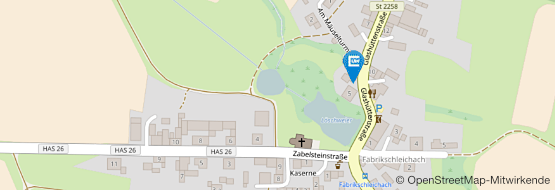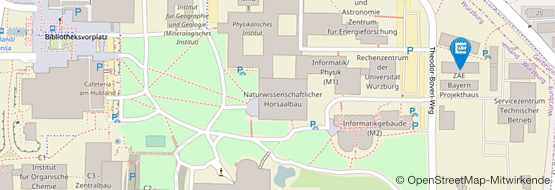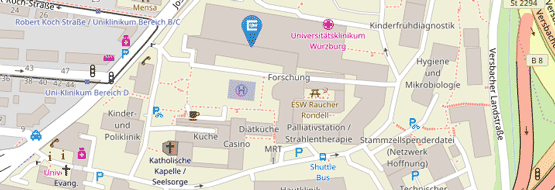Priv.-Doz. Dr. Vladimir Soukhoroukov | |
Telefon: | +49 931 31-84511 |
| |
List of publications
- [ 2022 ]
- [ 2021 ]
- [ 2020 ]
- [ 2019 ]
- [ 2018 ]
- [ 2017 ]
- [ 2016 ]
- [ 2015 ]
- [ 2014 ]
- [ 2013 ]
- [ 2012 ]
- [ 2011 ]
- [ 2010 ]
- [ 2009 ]
- [ 2008 ]
- [ 2007 ]
- [ 2006 ]
- [ 2005 ]
- [ 2004 ]
- [ 2003 ]
- [ 2002 ]
- [ 2001 ]
- [ 2000 ]
- [ 1999 ]
- [ 1998 ]
- [ 1997 ]
- [ 1996 ]
- [ 1995 ]
- [ 1994 ]
- [ 1993 ]
- [ 1991 ]
- [ 1989 ]
- [ 1988 ]
- [ 1987 ]
- [ 1986 ]
- [ 1984 ]
- [ 1983 ]
- [ 1982 ]
2022[ to top ]
-
Glucose and Inositol Transporters, SLC5A1 and SLC5A3, in Glioblastoma Cell Migration. . In Cancers, 14, S. 5794. 2022.
-
Glucose and Inositol Transporters, SLC5A1 and SLC5A3, in Glioblastoma Cell Migration. . 2022.
-
Contraction of the rigor actomyosin complex drives bulk hemoglobin expulsion from hemolyzing erythrocytes. . In Biomechanics and Modeling in Mechanobiology. 2022.
2021[ to top ]
-
A role for TASK2 channels in the human immunological synapse. . In European Journal of Immunology, 51(2), S. 342–353. John Wiley & Sons, Ltd, 2021.
-
Opposite effects of the triple target (DNA-PK/PI3K/mTOR) inhibitor PI-103 on the radiation sensitivity of glioblastoma cell lines proficient and deficient in DNA-PKcs. . In BMC Cancer, 21(1), S. 1201-. 2021.
2020[ to top ]
-
FocAn: automated 3D analysis of DNA repair foci in image stacks acquired by confocal fluorescence microscopy. . In BMC Bioinformatics, 21(1), S. 27-. 2020.
2019[ to top ]
-
Differential effects of the Akt inhibitor MK-2206 on migration and radiation sensitivity of glioblastoma cells. . In BMC Cancer, 19(1), S. 299-. 2019.
2018[ to top ]
-
Nanostructure of DNA repair foci revealed by superresolution microscopy. . In The FASEB Journal, S. fj.201701435-. Federation of American Societies for Experimental Biology, 2018.
-
MEK-inhibitor PD184352 enhances the radiosensitizing effect of the Hsp90 inhibitor NVP-AUY922: the role of cell type and drug-irradiation schedule. . In Oncotarget, 9, S. 37379–37392. 2018.
2017[ to top ]
-
Migration pattern, actin cytoskeleton organization and response to PI3K-, mTOR-, and Hsp90-inhibition of glioblastoma cells with different invasive capacities. . In Oncotarget, 8, S. 45298–45310. 2017.
2016[ to top ]
-
Dual PI3K- and mTOR-inhibitor PI-103 can either enhance or reduce the radiosensitizing effect of the Hsp90 inhibitor NVP-AUY922 in tumor cells: The role of drug-irradiation schedule. . In Oncotarget, 5. 2016.
2015[ to top ]
-
Actin cytoskeleton organization, cell surface modification and invasion rate of 5 glioblastoma cell lines differing in \{PTEN} and p53 status. . In Experimental Cell Research, 330(2), S. 346–357. 2015.
-
Hypotonic Activation of the Myo-Inositol Transporter SLC5A3 in HEK293 Cells Probed by Cell Volumetry, Confocal and Super-Resolution Microscopy. . In PLoS ONE, 10(3), S. e0119990. Public Library of Science, 2015.
-
Electro-microinjection of fish eggs with an immobile capillary electrode. . In Biomicrofluidics, 9, S. 064109. 2015.
2014[ to top ]
-
Cell Surface Area and Membrane Folding in Glioblastoma Cell Lines Differing in PTEN and p53 Status. . In PLoS ONE, 9(1), S. e87052. Public Library of Science, 2014.
2013[ to top ]
-
Radiosensitization of Glioblastoma Cell Lines by the Dual PI3K and mTOR Inhibitor NVP-BEZ235 Depends on Drug-Irradiation Schedule. . In Transl Oncol., 6(2), S. 169–179. 2013.
-
Prototype for Automatable, Dielectrophoretically-Accessed Intracellular Membrane-Potential Measurements by Metal Electrodes. . In ASSAY and Drug Development Technologies., 11(1), S. 9–16. 2013.
-
A non-invasive plant-based probe for continuous monitoring of water stress in real time: a new tool for irrigation scheduling and deeper insight into drought and salinity stress physiology. . In Theoretical and Experimental Plant Physiology, 25, S. 2–11. scielo, 2013.
-
Hsp90 inhibition by NVP-AUY922 and NVP-BEP800 decreases migration and invasion of irradiated normoxic and hypoxic tumor cell lines. . In Cancer Letters, 331(2), S. 200–210. 2013.
-
Identification of two-pore domain potassium channels as potent modulators of osmotic volume regulation in human T lymphocytes. . In Biochimica et Biophysica Acta (BBA) - Biomembranes, 1828(2), S. 699–707. 2013.
2012[ to top ]
-
Concomitant measurements of stem sap flow and leaf turgor pressure in olive trees using the leaf patch clamp pressure probe. . In Agricultural Water Management, 114, S. 50–58. 2012.
-
Effects of a Pulse Electric Field on Electrofusion of Giant Unilamellar Vesicle (GUV)-Jurkat Cell. . In Journal of Thermal Science and Technology, 7(4), S. 589–602. 2012.
-
Dielectric Analysis and Multi-cell Electrofusion of the Yeast Pichia pastoris for Electrophysiological Studies. . In Journal of Membrane Biology, S. 1–12. Springer New York, 2012.
-
Leaf patch clamp pressure probe measurements on olive leaves in a nearly turgorless state. . In Plant Biology, 14(4), S. 666–674. Blackwell Publishing Ltd, 2012.
-
Hsp90 inhibitor NVP-AUY922 enhances radiation sensitivity of tumor cell lines under hypoxia. . In Cancer Biol Ther., 13(6), S. 425–434. 2012.
-
Hsp90 inhibitors, NVP-AUY922 and NVP-BEP800 may exert a significant radiosensitization on tumor cells along with a cell type-specific cytotoxicity. . In Transl. Oncology, 5(5), S. 356–369. 2012.
-
Changes in the dielectric properties of medaka fish embryos during development, studied by electrorotation. . In Biochemical and biophysical research communications. 2012.
2011[ to top ]
-
Simultaneous radiation and Hsp90 inhibition by NVP-AUY922 or NVP-BEP800 is more efficient in tumor cell killing than drug-first modality followed by irradiation. . In STRAHLENTHERAPIE UND ONKOLOGIE, 187(1), S. 125–126. URBAN & VOGEL, NEUMARKTER STRASSE 43, D-81673 MUNICH, GERMANY, 2011.
-
Volume regulation of murine T lymphocytes relies on voltage-dependent and two-pore domain potassium channels. . In Biochimica et Biophysica Acta (BBA) - Biomembranes, 1808(8), S. 2036–2044. 2011.
-
Effects of a Pulse Electric Field on Electrofusion of Giant Unilamellar Vesicle (GUV) -Jurkat Cell (Measurement of Fusion Ratio and Electric Field Analysis of Pulsed GUV-Jurkat Cell). . In TRANSACTIONS OF THE JAPAN SOCIETY OF MECHANICAL ENGINEERS Series B, 77(777), S. 1269–1278. 2011.
2010[ to top ]
-
Comparative monitoring of temporal and spatial changes in tree water status using the non-invasive leaf patch clamp pressure probe and the pressure bomb. . In AGRICULTURAL WATER MANAGEMENT, 98(2), S. 283–290. ELSEVIER SCIENCE BV, PO BOX 211, 1000 AE AMSTERDAM, NETHERLANDS, 2010.
2009[ to top ]
-
Pore size of swelling-activated channels for organic osmolytes in Jurkat lymphocytes, probed by differential polymer exclusion. . In BIOCHIMICA ET BIOPHYSICA ACTA-BIOMEMBRANES, 1788(9), S. 1841–1850. ELSEVIER SCIENCE BV, PO BOX 211, 1000 AE AMSTERDAM, NETHERLANDS, 2009.
-
Intracellular delivery of 2-deoxy-D-glucose into tumor cells by long-term cultivation and through swelling-activated pathways: Implications for radiation treatment. . In MOLECULAR MEDICINE REPORTS, 2(4), S. 633–640. SPANDIDOS PUBL LTD, POB 18179, ATHENS, 116 10, GREECE, 2009.
-
Physicochemical features of ultra-high viscosity alginates. . In CARBOHYDRATE RESEARCH, 344(8), S. 985–995. ELSEVIER SCI LTD, THE BOULEVARD, LANGFORD LANE, KIDLINGTON, OXFORD OX5 1GB, OXON, ENGLAND, 2009.
2008[ to top ]
-
A combined patch-clamp and electrorotation study of the voltage- and frequency-dependent membrane capacitance caused by structurally dissimilar lipophilic anions. . In JOURNAL OF MEMBRANE BIOLOGY, 221(2), S. 107–121. SPRINGER, 233 SPRING STREET, NEW YORK, NY 10013 USA, 2008.
-
Effects on capacitance by overexpression of membrane proteins. . In BIOCHEMICAL AND BIOPHYSICAL RESEARCH COMMUNICATIONS, 369(4), S. 1022–1026. ACADEMIC PRESS INC ELSEVIER SCIENCE, 525 B ST, STE 1900, SAN DIEGO, CA 92101-4495 USA, 2008.
-
Electrofused giant protoplasts of Saccharomyces cerevisiae as a novel system for electrophysiological studies on membrane proteins. . In BIOCHIMICA ET BIOPHYSICA ACTA-BIOMEMBRANES, 1778(6), S. 1493–1500. ELSEVIER SCIENCE BV, PO BOX 211, 1000 AE AMSTERDAM, NETHERLANDS, 2008.
2007[ to top ]
-
Mechanisms of electrically mediated cytosolic Ca2+ transients in Aequorin-Transformed tobacco cells. . In BIOPHYSICAL JOURNAL, 93(9), S. 3324–3337. BIOPHYSICAL SOC, 9650 ROCKVILLE PIKE, BETHESDA, MD 20814-3998 USA, 2007.
-
Dielectrophoretic behavior of in vitro-derived bovine metaphase II oocytes and zygotes and its relation to in vitro embryonic developmental competence and mRNA expression pattern. . In REPRODUCTION, 133(5), S. 931–946. BIO SCIENTIFICA LTD, EURO HOUSE, 22 APEX COURT WOODLANDS, BRADLEY STOKE, BRISTOL BS32 4JT, ENGLAND, 2007.
-
Physical and biological properties of barium cross-linked alginate membranes. . In BIOMATERIALS, 28(7), S. 1327–1345. ELSEVIER SCI LTD, THE BOULEVARD, LANGFORD LANE, KIDLINGTON, OXFORD OX5 1GB, OXON, ENGLAND, 2007.
2006[ to top ]
-
Biophysical characterisation of electrofused giant HEK293-cells as a novel electrophysiological expression system. . In BIOCHEMICAL AND BIOPHYSICAL RESEARCH COMMUNICATIONS, 348(2), S. 673–681. ACADEMIC PRESS INC ELSEVIER SCIENCE, 525 B ST, STE 1900, SAN DIEGO, CA 92101-4495 USA, 2006.
-
A biophysical approach to the optimisation of dendritic-tumour cell electrofusion. . In BIOCHEMICAL AND BIOPHYSICAL RESEARCH COMMUNICATIONS, 346(3), S. 829–839. ACADEMIC PRESS INC ELSEVIER SCIENCE, 525 B ST, STE 1900, SAN DIEGO, CA 92101-4495 USA, 2006.
-
Swelling-activated pathways in human T-lymphocytes studied by cell volumetry and electrorotation. . In BIOPHYSICAL JOURNAL, 90(12), S. 4720–4729. BIOPHYSICAL SOCIETY, 9650 ROCKVILLE PIKE, BETHESDA, MD 20814-3998 USA, 2006.
2005[ to top ]
-
Surviving high-intensity field pulses: Strategies for improving robustness and performance of electrotransfection and electrofusion. . In JOURNAL OF MEMBRANE BIOLOGY, 206(3), S. 187–201. SPRINGER, 233 SPRING STREET, NEW YORK, NY 10013 USA, 2005.
-
Towards a medically approved technology for alginate-based microcapsules allowing long-term immunoisolated transplantation. . In JOURNAL OF MATERIALS SCIENCE-MATERIALS IN MEDICINE, 16(6), S. 491–501. SPRINGER, VAN GODEWIJCKSTRAAT 30, 3311 GZ DORDRECHT, NETHERLANDS, 2005.
2004[ to top ]
-
Measurement of the permeability and resealing time constant of the electroporated mammalian cell membranes. . In INTERNATIONAL JOURNAL OF HEAT AND MASS TRANSFER, 47(21), S. 4517–4524. PERGAMON-ELSEVIER SCIENCE LTD, THE BOULEVARD, LANGFORD LANE, KIDLINGTON, OXFORD OX5 1GB, ENGLAND, 2004.
-
Intracellular delivery of carbohydrates into mammalian cells through swelling-activated pathways. . In JOURNAL OF MEMBRANE BIOLOGY, 200(2), S. 67–81. SPRINGER, 233 SPRING STREET, NEW YORK, NY 10013 USA, 2004.
-
The effect of disaccharides on the transport of lipophilic ions in cell membranes studied by electrorotation. . In ELECTROSTATICS 2003, (178), H. Morgan (Hrsg.), S. 101–106. IOP PUBLISHING LTD, DIRAC HOUSE, TEMPLE BACK, BRISTOL BS1 6BE, ENGLAND, 2004.
2003[ to top ]
-
Trehalose conserves expression of bullous pemphigoid antigen 180 during desiccation and freezing. . In JOURNAL OF IMMUNOLOGICAL METHODS, 275(1-2), S. 179–190. ELSEVIER SCIENCE BV, PO BOX 211, 1000 AE AMSTERDAM, NETHERLANDS, 2003.
-
Electrotransfection of anchorage-dependent mammalian cells. . In EXPERIMENTAL CELL RESEARCH, 288(2), S. 344–353. ACADEMIC PRESS INC ELSEVIER SCIENCE, 525 B ST, STE 1900, SAN DIEGO, CA 92101-4495 USA, 2003.
2002[ to top ]
-
Interaction of fluorinated lipophilic ions with the plasma membrane of mammalian cells studied by electrorotation and dielectrophoresis. . In JOURNAL OF ELECTROSTATICS, 56(4), S. 419–434. ELSEVIER SCIENCE BV, PO BOX 211, 1000 AE AMSTERDAM, NETHERLANDS, 2002.
-
Intracellular delivery of trehalose into mammalian cells by electropermeabilization. . In JOURNAL OF MEMBRANE BIOLOGY, 189(1), S. 45–54. SPRINGER-VERLAG, 175 FIFTH AVE, NEW YORK, NY 10010 USA, 2002.
2001[ to top ]
-
Dielectric spectroscopy of Schizosaccharomyces pombe using electrorotation and electroorientation. . In BIOCHIMICA ET BIOPHYSICA ACTA-GENERAL SUBJECTS, 1568(2), S. 135–146. ELSEVIER SCIENCE BV, PO BOX 211, 1000 AE AMSTERDAM, NETHERLANDS, 2001.
-
Reversible electropermeabilization of mammalian cells by high-intensity, ultra-short pulses of submicrosecond duration. . In JOURNAL OF MEMBRANE BIOLOGY, 184(2), S. 161–170. SPRINGER-VERLAG, 175 FIFTH AVE, NEW YORK, NY 10010 USA, 2001.
-
Trehalose improves survival of electrotransfected mammalian cells. . In CYTOMETRY, 45(3), S. 161–169. WILEY-LISS, DIV JOHN WILEY & SONS INC, 605 THIRD AVE, NEW YORK, NY 10158-0012 USA, 2001.
-
Phloretin-induced changes of lipophilic ion transport across the plasma membrane of mammalian cells. . In BIOPHYSICAL JOURNAL, 81(2), S. 1006–1013. BIOPHYSICAL SOCIETY, 9650 ROCKVILLE PIKE, BETHESDA, MD 20814-3998 USA, 2001.
-
A single-shell model for biological cells extended to account for the dielectric anisotropy of the plasma membrane. . In JOURNAL OF ELECTROSTATICS, 50(3), S. 191–204. ELSEVIER SCIENCE BV, PO BOX 211, 1000 AE AMSTERDAM, NETHERLANDS, 2001.
2000[ to top ]
-
Effect of fluorine substitution on the interaction of lipophilic ions with the plasma membrane of mammalian cells. . In BIOPHYSICAL JOURNAL, 79(3), S. 1490–1497. BIOPHYSICAL SOCIETY, 9650 ROCKVILLE PIKE, BETHESDA, MD 20814-3998 USA, 2000.
-
Electromanipulation of mammalian cells: Fundamentals and application. . In IEEE TRANSACTIONS ON PLASMA SCIENCE, 28(1), S. 72–82. IEEE-INST ELECTRICAL ELECTRONICS ENGINEERS INC, 345 E 47TH ST, NEW YORK, NY 10017-2394 USA, 2000.
1999[ to top ]
-
Resistivity of red blood cells against high-intensity, short-duration electric field pulses induced by chelating agents. . In JOURNAL OF MEMBRANE BIOLOGY, 170(2), S. 121–133. SPRINGER VERLAG, 175 FIFTH AVE, NEW YORK, NY 10010 USA, 1999.
-
Dielectric properties of alginate beads and bound water relaxation studied by electrorotation. . In BIOPOLYMERS, 50(3), S. 227–237. JOHN WILEY & SONS INC, 605 THIRD AVE, NEW YORK, NY 10158-0012 USA, 1999.
1998[ to top ]
-
The effect of electrical deformation forces on the electropermeabilization of erythrocyte membranes in low- and high-conductivity media. . In JOURNAL OF MEMBRANE BIOLOGY, 163(3), S. 235–245. SPRINGER VERLAG, 175 FIFTH AVE, NEW YORK, NY 10010 USA, 1998.
-
Interaction of lipophilic ions with the plasma membrane of mammalian cells studied by electrorotation. . In BIOPHYSICAL JOURNAL, 74(6), S. 3031–3043. BIOPHYSICAL SOCIETY, 9650 ROCKVILLE PIKE, BETHESDA, MD 20814-3998 USA, 1998.
-
Electrorotation of isolated generative and vegetative cells, and of intact pollen grains of Lilium longiflorum. . In JOURNAL OF MEMBRANE BIOLOGY, 161(1), S. 21–32. SPRINGER VERLAG, 175 FIFTH AVE, NEW YORK, NY 10010 USA, 1998.
1997[ to top ]
-
Electrorotational spectra of protoplasts generated from the giant marine alga Valonia utricularis. . In PROTOPLASMA, 196(3-4), S. 123–134. SPRINGER-VERLAG WIEN, SACHSENPLATZ 4-6, PO BOX 89, A-1201 VIENNA, AUSTRIA, 1997.
1996[ to top ]
-
Effect of medium conductivity and composition on the uptake of propidium iodide into electropermeabilized myeloma cells. . In BIOCHIMICA ET BIOPHYSICA ACTA-BIOMEMBRANES, 1284(2), S. 143–152. ELSEVIER SCIENCE BV, PO BOX 211, 1000 AE AMSTERDAM, NETHERLANDS, 1996.
-
Absorption of tungsten carbonyl anions into the lipid bilayer membrane of mouse myeloma cells. . In INORGANIC CHEMISTRY, 35(20), S. 5762-&. AMER CHEMICAL SOC, 1155 16TH ST, NW, WASHINGTON, DC 20036, 1996.
-
Electrorotation of erythrocytes treated with dipicrylamine: Mobile charges within the membrane show their `’signature’’ in rotational spectra. . In JOURNAL OF MEMBRANE BIOLOGY, 153(2), S. 161–169. SPRINGER VERLAG, 175 FIFTH AVE, NEW YORK, NY 10010, 1996.
1995[ to top ]
-
ELECTROPERMEABILIZATION AND FLUORESCENT TRACER EXCHANGE - THE ROLE OF WHOLE-CELL CAPACITANCE. . In CYTOMETRY, 21(3), S. 230–240. WILEY-LISS, DIV JOHN WILEY & SONS INC 605 THIRD AVE, NEW YORK, NY 10158-0012, 1995.
1994[ to top ]
-
DNA, PROTEIN, AND PLASMA-MEMBRANE INCORPORATION BY ARRESTED MAMMALIAN-CELLS. . In JOURNAL OF MEMBRANE BIOLOGY, 142(1), S. 77–92. SPRINGER VERLAG, 175 FIFTH AVE, NEW YORK, NY 10010, 1994.
-
EFFECT OF ELECTRIC-FIELD PULSES ON THE VIABILITY AND ON THE MEMBRANE-BOUND IMMUNOGLOBULINS OF LPS-ACTIVATED MURINE B-LYMPHOCYTES - CORRELATION WITH THE CELL-CYCLE. . In CYTOMETRY, 15(1), S. 35–45. WILEY-LISS, DIV JOHN WILEY & SONS INC 605 THIRD AVE, NEW YORK, NY 10158-0012, 1994.
1993[ to top ]
-
FE-2+ IONS AND REDUCED GLUTATHIONE - CHEMICAL ACTIVATORS OF PSORALEN-SENSITIZED PHOTOHEMOLYSIS. . In JOURNAL OF PHOTOCHEMISTRY AND PHOTOBIOLOGY B-BIOLOGY, 17(1), S. 69–75. ELSEVIER SCIENCE SA LAUSANNE, PO BOX 564, 1001 LAUSANNE 1, SWITZERLAND, 1993.
-
HYPOTONICALLY INDUCED CHANGES IN THE PLASMA-MEMBRANE OF CULTURED-MAMMALIAN-CELLS. . In JOURNAL OF MEMBRANE BIOLOGY, 132(1), S. 27–40. SPRINGER VERLAG, 175 FIFTH AVE, NEW YORK, NY 10010, 1993.
-
PRE-IRRADIATED PHOTOOXIDIZED PSORALEN INDUCES HEMOLYSIS AND CHANGES IN ELECTRICAL PARAMETERS OF ERYTHROCYTE-MEMBRANES. . In BIOELECTROCHEMISTRY AND BIOENERGETICS, 31(2), S. 193–202. ELSEVIER SCIENCE SA LAUSANNE, PO BOX 564, 1001 LAUSANNE 1, SWITZERLAND, 1993.
1991[ to top ]
-
PHOTOHEMOLYSIS SENSITIZED BY PSORALEN - RECIPROCITY LAW IS NOT FULFILLED. . In PHOTOCHEMISTRY AND PHOTOBIOLOGY, 54(3), S. 375–379. AMER SOC PHOTOBIOLOGY, BIOTECH PARK, 1021 15TH ST, SUITE 9, AUGUSTA, GA 30901-3158, 1991.
-
EFFECT OF CALCIUM-IONS ON PSORALEN-SENSITIZED PHOTOHEMOLYSIS. . In JOURNAL OF PHOTOCHEMISTRY AND PHOTOBIOLOGY B-BIOLOGY, 10(1-2), S. 159–164. ELSEVIER SCIENCE SA LAUSANNE, PO BOX 564, 1001 LAUSANNE 1, SWITZERLAND, 1991.
1989[ to top ]
-
AGGREGATION EFFECT ON FLUORESCENT PROPERTIES OF FUROCOUMARINS IN SOLUTIONS. . In ZHURNAL FIZICHESKOI KHIMII, 63(10), S. 2768–2773. MEZHDUNARODNAYA KNIGA, 39 DIMITROVA UL., 113095 MOSCOW, RUSSIA, 1989.
-
ANTIOXIDANTS INHIBIT HEMOLYSIS INDUCED BY PHOTOOXIDIZED PSORALEN. . In BIOFIZIKA, 34(2), S. 195–198. MEZHDUNARODNAYA KNIGA, 39 DIMITROVA UL., 113095 MOSCOW, RUSSIA, 1989.
1988[ to top ]
-
DEPENDENCE OF ABSORPTION AND FLUORESCENCE EXCITATION-SPECTRA ON THE CONCENTRATION OF FUROCOUMARINS AND COUMARINS. . In BIOFIZIKA, 33(5), S. 747–750. MEZHDUNARODNAYA KNIGA, 39 DIMITROVA UL., 113095 MOSCOW, RUSSIA, 1988.
-
ENHANCING EFFECT OF CATECHOLAMINE DIHYDROXYPHENYLALANINE ON PSORALEN PHOTOSENSITIZED HEMOLYSIS. . In STUDIA BIOPHYSICA, 124(2-3), S. 235–238. GORDON BREACH SCI PUBL LTD, C/O STBS LTD PO BOX 90, READING, BERKS, ENGLAND RG1 8JL, 1988.
-
HYPOTHESIS OF THE INDUCTION OF PSORALEN PHOTOTOXIC EFFECTS THROUGH THE STAGE OF PHOTOOXIDIZED PSORALEN FORMATION - MODEL STUDIES OF ERYTHROCYTES. . In STUDIA BIOPHYSICA, 124(2-3), S. 205–223. GORDON BREACH SCI PUBL LTD, C/O STBS LTD PO BOX 90, READING, BERKS, ENGLAND RG1 8JL, 1988.
-
PHOTOHEMOLYSIS SENSITIZED BY PSORALEN, PARADOXICAL DEPENDENCE ON THE LIGHT-INTENSITY. . In DOKLADY AKADEMII NAUK SSSR, 302(5), S. 1258–1260. MEZHDUNARODNAYA KNIGA, 39 DIMITROVA UL., 113095 MOSCOW, RUSSIA, 1988.
1987[ to top ]
-
PHOTOSENSITIZED LESION OF ERYTHROCYTE-MEMBRANE INDUCED BY PSORALEN - 2 MECHANISMS. . In BIOLOGICHESKIE MEMBRANY, 4(3), S. 270–279. MEZHDUNARODNAYA KNIGA, 39 DIMITROVA UL., 113095 MOSCOW, RUSSIA, 1987.
1986[ to top ]
-
GENERATION AND QUENCHING OF SINGLET MOLECULAR-OXYGEN BY FUROCOUMARINS - DIRECT MEASUREMENTS. . In STUDIA BIOPHYSICA, 114(1-3), S. 149–158. GORDON BREACH SCI PUBL LTD, C/O STBS LTD, PO BOX 90, READING, BERKS, ENGLAND RG1 8JL, 1986.
-
MECHANISMS OF FUROCOUMARIN-SENSITIZED DAMAGE TO BIOLOGICAL-MEMBRANES. . In STUDIA BIOPHYSICA, 114(1-3), S. 159–170. GORDON BREACH SCI PUBL LTD, C/O STBS LTD, PO BOX 90, READING, BERKS, ENGLAND RG1 8JL, 1986.
-
FUROCOUMARIN-PHOTOSENSITIZED FORMATION OF SINGLET MOLECULAR-OXYGEN IN AQUEOUS AND ALCOHOL SOLUTION. . In BIOFIZIKA, 31(1), S. 154–156. MEZHDUNARODNAYA KNIGA, 39 DIMITROVA UL., 113095 MOSCOW, RUSSIA, 1986.
-
PHOTOSENSITIZED MODIFICATION OF ERYTHROCYTE-MEMBRANES INDUCED BY FUROCOUMARINS. . In PHOTOBIOCHEMISTRY AND PHOTOBIOPHYSICS, 10(3), S. 175–180. ELSEVIER SCIENCE BV, PO BOX 211, 1000 AE AMSTERDAM, NETHERLANDS, 1986.
-
EFFECTS OF ANTIOXIDANTS ON PHOTOOXIDATION OF PSORALEN. . In BIOFIZIKA, 31(4), S. 549–554. MEZHDUNARODNAYA KNIGA, 39 DIMITROVA UL., 113095 MOSCOW, RUSSIA, 1986.
1984[ to top ]
-
A COMPARISON BETWEEN SKIN-PHOTOSENSITIZING (334 NM) ACTIVITIES OF 8-METHOXYPSORALEN AND ANGELICIN. . In EXPERIENTIA, 40(3), S. 264–265. BIRKHAUSER VERLAG AG, PO BOX 133 KLOSTERBERG 23, CH-4010 BASEL, SWITZERLAND, 1984.
-
PHOTOOXIDATIVE REACTIONS OF PSORALENS. . In STUDIA BIOPHYSICA, 101, S. 89–98. GORDON BREACH SCI PUBL LTD, C/O STBS LTD, PO BOX 90, READING, BERKS, ENGLAND RG1 8JL, 1984.
-
PHOTOLYSIS OF 3,4-DIOXYPHENYLALANINE SENSITIZED BY 8-METHOXYPSORALENE - ACCELERATION BY SULFOHYDRYL GROUPS. . In ZHURNAL FIZICHESKOI KHIMII, 58(2), S. 470–472. MEZHDUNARODNAYA KNIGA, 39 DIMITROVA UL., 113095 MOSCOW, RUSSIA, 1984.
1983[ to top ]
-
8-METHOXYPSORALEN-SENSITIZED PHOTO-OXIDATION OF TOCOPHEROLS. . In PHOTOBIOCHEMISTRY AND PHOTOBIOPHYSICS, 5(2), S. 113–117. ELSEVIER SCIENCE BV, PO BOX 211, 1000 AE AMSTERDAM, NETHERLANDS, 1983.
-
OXIDATION OF LIPIDS BY DIMERIC PHOTOOXIDIZING 8-METHOXYPSORALENE. . In ZHURNAL FIZICHESKOI KHIMII, 57(5), S. 1320–1321. MEZHDUNARODNAYA KNIGA, 39 DIMITROVA UL., 113095 MOSCOW, RUSSIA, 1983.
-
OXIDATION OF UNSATURATED LIPIDS AND DIHYDROPHENYLALANINE IN THE ABSENCE OF LIGHT BY PHOTO-OXIDIZED FUROCOUMARINS. . In VOPROSY MEDITSINSKOI KHIMII, 29(5), S. 75–78. VOPROSY MEDITZINSKOI KHIMII, INST BIOMEDICAL CHEMISTRY, 10 POGODINSKAYA STR, 119832 MOSCOW, RUSSIA, 1983.
-
PHOTOGENERATION OF SINGLET OXYGEN BY PSORALENS. . In BULLETIN OF EXPERIMENTAL BIOLOGY AND MEDICINE, 96(9), S. 1259–1261. PLENUM PUBL CORP, CONSULTANTS BUREAU, 233 SPRING ST, NEW YORK, NY 10013, 1983.
-
DARK OXIDATION OF LIPOSOMES BY PHOTO-OXIDATION 8-METHOXYPSORALENE. . In ZHURNAL FIZICHESKOI KHIMII, 57(11), S. 2815–2817. MEZHDUNARODNAYA KNIGA, 39 DIMITROVA UL., 113095 MOSCOW, RUSSIA, 1983.
1982[ to top ]
-
DARK OXIDATION OF UNSATURATED LIPIDS BY THE PHOTOOXIDIZED 8-METHOXYPSORALEN. . In ZEITSCHRIFT FUR NATURFORSCHUNG C-A JOURNAL OF BIOSCIENCES, 37(1-2), S. 70–74. VERLAG Z NATURFORSCH, POSTFACH 2645, W-7400 TUBINGEN, GERMANY, 1982.
-
LUMINESCENT PHOTOPRODUCTS OF 8-METHOXYPSORALEN. . In STUDIA BIOPHYSICA, 92(1), S. 15–23. GORDON BREACH SCI PUBL LTD, C/O STBS LTD, PO BOX 90, READING, BERKS, ENGLAND RG1 8JL, 1982.



